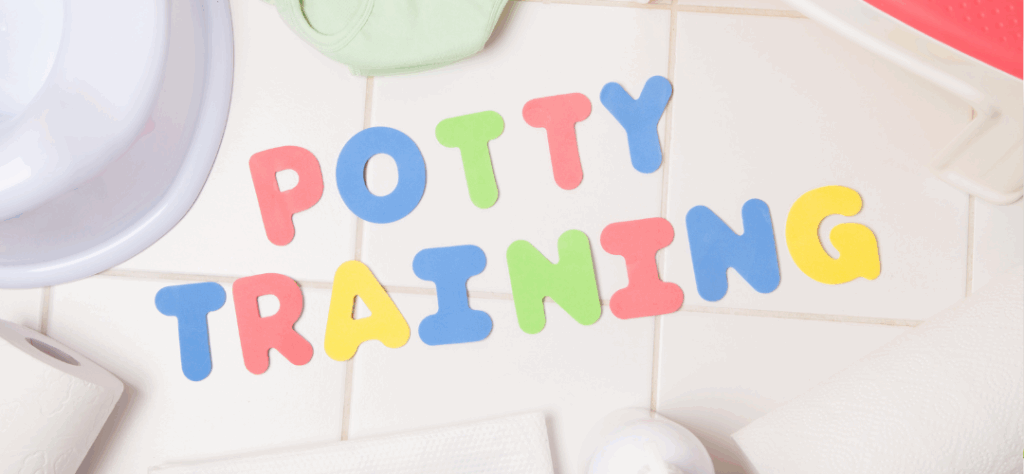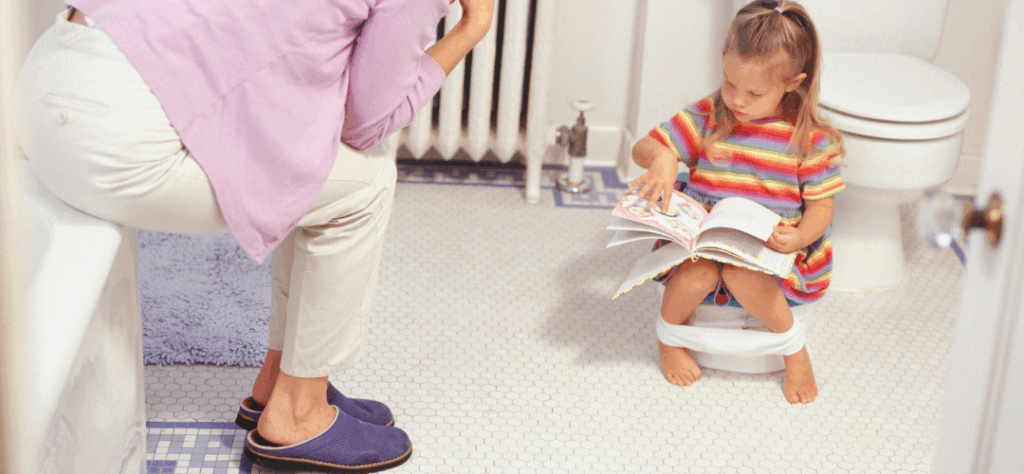Let me start by saying: I am not a doctor or a parenting “expert” — I’m just a mom who’s been in the trenches, elbow-deep in Clorox wipes, learning the hard way what actually works when it comes to potty training.
Between my own experience potty training 2 kids— plus swapping horror stories and hard-won advice with other moms — I know firsthand how overwhelming this stage can feel. Everyone talks about “potty training in three days,” but nobody tells you what happens when day two is a total dumpster fire.
In this post, I’m sharing exactly what worked for us (and what totally backfired). This is our honest, real-life 3-day potty training story — no sugarcoating, no magical unicorn solutions, just practical advice from one mom to another.
✅ Heads up: This post may contain affiliate links, which means I may earn a small commission if you purchase through them — at no extra cost to you. You can read my full Affiliate Disclosure here.
Nothing says festive long weekend like spending three straight days asking a small person if they have to pee every seven minutes. But this past Easter, instead of brunching and egg hunting like normal people, I committed to potty training my son using the 3-Day Method by Lora Jensen — which you can download here for free if you’re also feeling like voluntarily walking into battle.
If you’re looking for a realistic potty training experience — one that doesn’t involve bribing your kid with stickers or waking them up in the middle of the night (seriously, who thought that was a good idea?) — keep reading.
🚽 Why I Chose the 3-Day Potty Training Method

Like many desperate parents, I searched how to potty train in 3 days and stumbled on the 3-Day Method by Lora Jensen. The appeal? Fast results and a clear plan. The key rule? Three full days at home with your toddler, glued to their side, fully committed. No errands. No distractions. No pants (for the kid, not you — although I’m not judging your journey).
According to the American Academy of Pediatrics (AAP), most children show signs of potty training readiness between 18 and 24 months, but some may not be ready until 3 years or older. Every child is different — and pushing too early can actually backfire.
Lora Jensen’s method is all about ditching diapers completely, staying home, and giving your child the chance to recognize when they need to pee or poop.
Recognizing the Pee: Faster Than Expected
I’ll be honest — my kid figured out he needed to pee by the first day. Total shocker. He was able to tell me when he had to go, and was genuinely proud every time he nailed it. The method suggests using rewards like candy, toys, or sticker charts. But here’s the thing: my son was not interested in any of that. I didn’t do rewards. No stickers, no M&Ms, no prize boxes. He was just genuinely proud to pee in the potty, and honestly? That was good enough for both of us.
🌙 The Nighttime Drama: I Refuse to Be Gaslit by a Method
The method also says you should wake your child up one hour after they fall asleep to take them to the potty. To which I say: absolutely not.
I tried it ONCE. Picture this: me, gently lifting my half-asleep toddler, only for him to completely melt down, eyes still closed, screaming like I was the Tooth Fairy coming to steal his soul. Not worth it.
He woke up soaked the first night. Soaked again the second night. By night three, I embraced the Sneaky Pull-Up After Bedtime™ strategy. I wait until he’s asleep, slip on the pull-up, and go on with my life. He doesn’t know it’s there, so there’s no regression during the day. And no, I will not apologize for choosing my sanity over sheet laundry every single day.
💩 The Poop Struggle Is Real

Listen, the pee part? A+ experience. The poop part? Ongoing tragedy.
Here’s the part of potty training success stories they don’t always tell you: the poop part takes longer.
A week later, back at daycare, he’s holding steady with the peeing — but pooping is a different story. Two accidents yesterday alone. The worst part? I can tell he’s not sure what’s happening. When he feels the urge, he clutches his little butt and tells me, “ouchie in the bum.”
He takes forever when it’s poop time, too — sits on the potty like it’s his full-time job, absolutely refusing to get up because something is brewing. I know it’s coming. He knows it’s coming. But the journey is… slow.
That’s okay. I’m learning that poop takes longer for a lot of kids. I just need to keep showing up, being supportive, and staying consistent.
If your toddler refuses to poop in the potty or is experiencing poop training regression, know you’re not alone.
🩲 My Honest Tips for Potty Training Success (And Staying Sane)
✔️ Ditch the diapers completely during the day.
Pull-ups during the day will backfire — these kids are too smart. If they know they can go in something, they will.
✔️ Stock up on tons of underwear.
Forget pants at first. My son was naked the first two days. On day three, I introduced superhero underwear (major excitement!). He didn’t wear pants until it was time for daycare.
✔️ Skip the rewards if your kid doesn’t care.
I didn’t need stickers or candy. Pride and potty dances were enough.
✔️ Don’t beat yourself up about nighttime.
If your child isn’t waking up dry, pull-ups at night are not the end of the world. Do what keeps you sane. Nighttime dryness can take months (or years) for some kids.
✅ Final Thoughts on the 3-Day Potty Training Method
Would I recommend the 3-Day Potty Training Method? Yes — but with realistic expectations:
- Daytime peeing? Absolutely achievable.
- Pooping? Give it time. Stay patient.
- Nighttime dryness? Not my priority right now, and that’s okay.
I’m calling this a potty training success story because my son is proud of himself, and I’m still standing. Is it perfect? Nope. Is it working? Yes.
If you’re a tired mom potty training a toddler and wondering if you’re doing it right — trust me, you are.
Remember: I’m sharing my personal experience as a mom, not medical advice. Every child is different, so consult your pediatrician if you have concerns about potty training readiness.
P.S. If potty training has you riding the emotional rollercoaster with your toddler (because wow, the feelings are BIG), you might also want to check out how to de-escalate a toddler meltdown without losing your mind (or your sanity). Trust me, it’s a skill set you’ll want in your back pocket.







